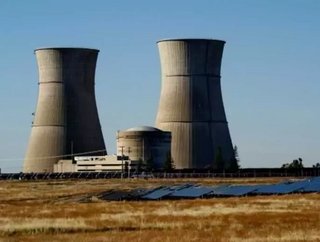Powering California with Nuclear Energy

Before you read this, check out the upper-right hand corner of this page to view this article in our digital reader. Trust us, it's way cooler!
Written by Burton Richter, Robert Budnitz, Jane Long, Per Peterson, and Jan Schori
The California Council on Science and Technology has examined the potential of nuclear energy to meet California’s electricity demand in the year 2050. The main focus of the organization’s analysis is on the CCST Realistic Model, which assumes that total electricity demand in California in the year 2050 amounts to 510 terawatt-hours per year (TWh/y). Since nuclear electricity is capital intensive, it is most economically used as baseload power where the plants run at their maximum output all of the time. It is also assumed that nuclear plants have a 90 percent capacity factor and that baseload power represents 67 percent of total electricity demand, the rest being supplied by renewables as mandated by California’s law AB32. This requires about 44 gigawatts (GW) of nuclear electricity capacity. Large-scale growth in nuclear energy in California will be part of a large-scale growth worldwide, which affects infrastructure and work force requirements. Consequently, the Council’s analysis assumes that California only gets its fair share of resources needed to scale up, but an expanding nuclear industry results in economies-of-scale which makes nuclear power less expensive for California.
Reactor technology is certain to evolve over the period of interest and future reactors will have characteristics similar to the new generation of large, advanced, light-water reactors (LWR), known as GEN III+ that are now under review by the U.S. Nuclear Regulatory Commission for deployment in the next decade. These are under construction in Asia and Europe, and a larger number of similar systems have been built in Asia recently. Based on the assumption that future U.S. reactors will be built to these new standards, the Council’s conclusions on technical issues are as follows:
- There are no technical barriers to large-scale deployment of nuclear power in California. There are, however, legislative barriers and public acceptance barriers that have to be overcome to implement a scenario that includes a large number of new nuclear reactors.
- The cost of electricity from new nuclear power plants is uncertain. No new ones have been built in decades, though 104 generating plants are operating in the U.S. today. Thus, operations, maintenance and fuel costs are known well, but the dominant cost, the amortization of construction costs, is uncertain. Estimates of electricity costs from new plants range from 6 to 8¢ per kilowatt-hour (KW-hr) up to 18¢ per KW-hr with most estimates at the lower end of the range. Our conclusion is that 6 to 8¢ per KW-hr is the best estimate today. This is discussed in more detail in section II.
- Loan guarantees for nuclear power will be required until the financial sector is convinced that the days of large delays and construction cost overruns are over. Continuation of the Price-Anderson act is assumed.
- Nuclear electricity costs will be much lower than solar for some time. There is insufficient information on wind costs yet to allow a comparison, particularly when costs to back up wind power are included.
- Cooling water availability in California is not a problem. Reactors can be cooled with reclaimed water or with forced air, though air-cooling is less efficient and would increase nuclear electricity prices by five to ten percent.
- There should be no problem with uranium availability for the foreseeable future and even large increases in uranium costs have only a small effect on nuclear power costs. There may be shortages of natural uranium in the long term, but there are ways to get around them.
- While there are manufacturing bottlenecks now, these should disappear over the next 10 to 15 years if nuclear power facilities worldwide grow as expected.
- There are benefits to the localities where nuclear plants are sited. Tax rates in California are set by the State Board of Equalization, typically at one percent of the cost of the plant, and collected locally. By current estimates this would amount to $50 million per year per gigawatt of electrical capacity (GWe). In addition, about 500 permanent jobs are created per GWe.
- The events at Fukushima, Japan where a number of boiling water reactors (BWR) were damaged in a major earthquake and tsunami will trigger review and evolution of safety in design, operation and management. The information gained during the Fukushima review and any recommendations made should be factored into decisions about the potential future use of nuclear reactor technologies in California.






